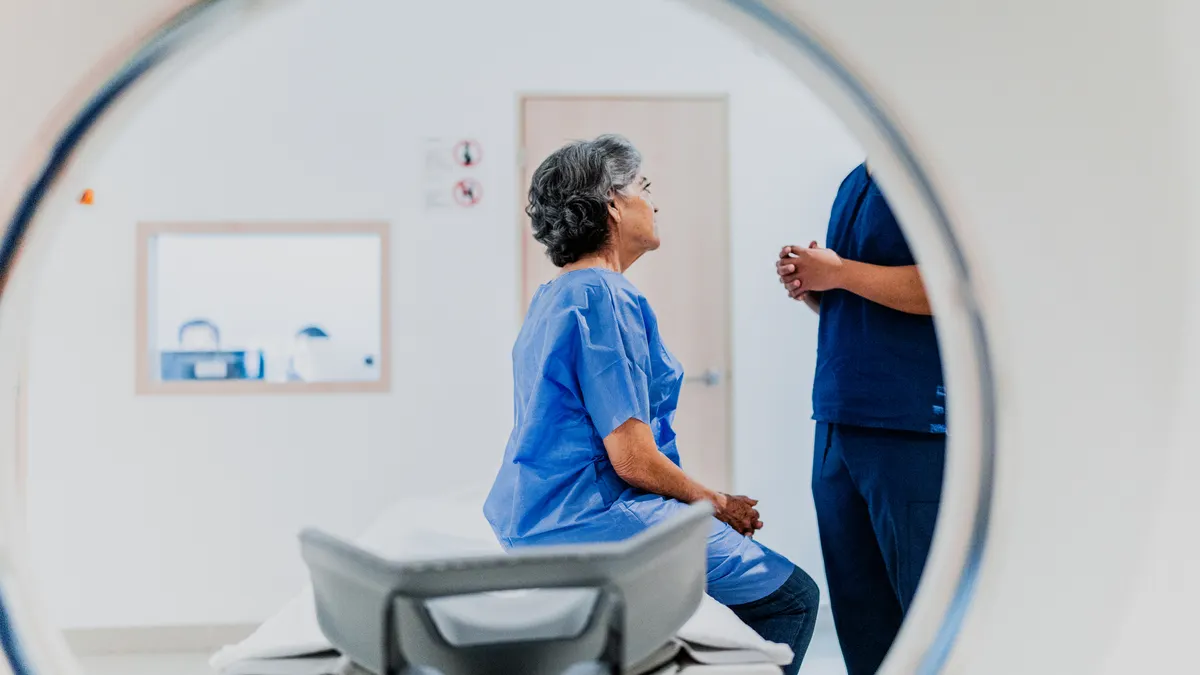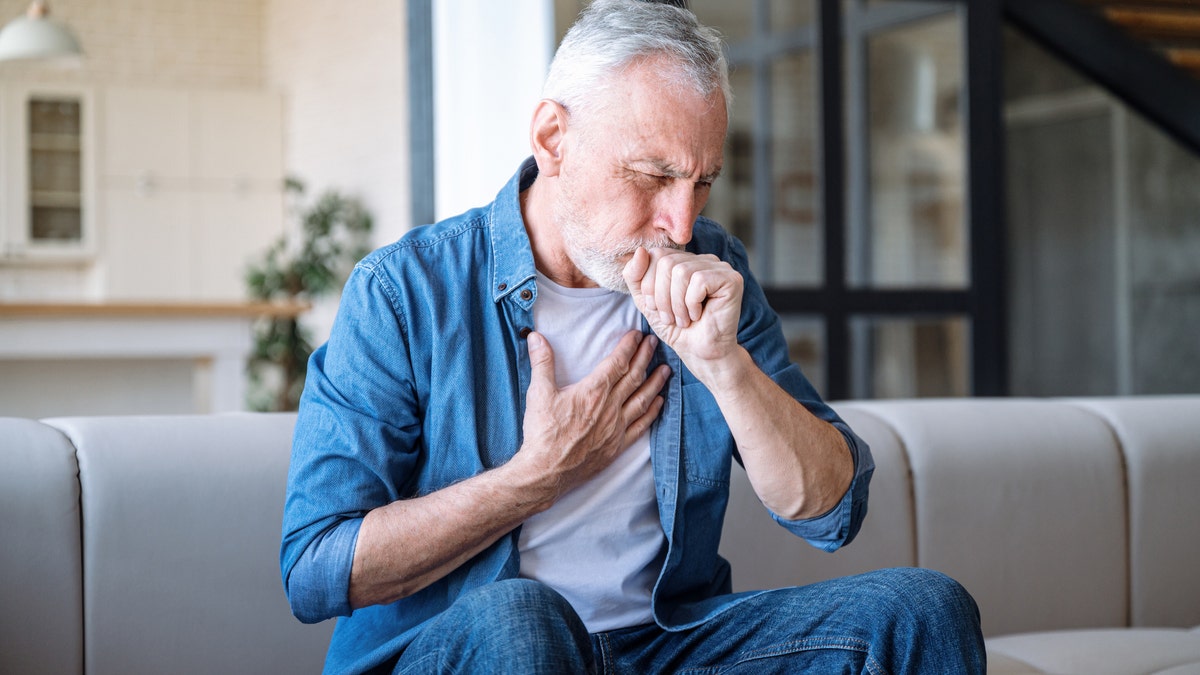Champion dancer, cancer survivor is giving back to others
Megan Stuart, 20, of Minneapolis, shares how she is leveraging her recent world championship win in Irish dancing to raise money for pediatric cancer patients.
Lung cancer is the leading cause of all cancer deaths in the United States.
There are several different risk factors for the disease, but above all, smoking remains the biggest contributor to lung cancer.
Most people who are diagnosed with lung cancer are 65 or older, according to the source, with the average age of diagnosis around 70.
SEVERE HEALTH RISKS OF VAPING AND E-CIGARETTES, ESPECIALLY FOR YOUTH, SAY EXPERTS
Read on to learn about more risk factors associated with the disease, how it is found and common signs to look out for.
- What is lung cancer?
- Is lung cancer usually fatal?
- How is lung cancer found?
- What are the common signs of lung cancer?
- What are treatments for lung cancer?
- What are the biggest risk factors for lung cancer?

Lung cancer primarily impacts older individuals. The biggest risk factor for lung cancer is smoking. (iStock)
1. What is lung cancer?
An individual is diagnosed with cancer when cells begin to grow out of control in the body. For lung cancer, this cell growth starts in the lungs.
There are two main types of lung cancer.
The most common is non-small cell lung cancer, which accounts for 80%-85% of all cases, according to the American Cancer Society.
CANCER RATES RISING IN YOUNG PEOPLE DUE TO ‘ACCELERATED AGING,' NEW STUDY FINDS: ‘HIGHLY TROUBLING’
There are different subtypes that fall under non-small cell lung cancer, which include adenocarcinoma, squamous cell carcinoma, large cell (undifferentiated) carcinoma and large cell neuroendocrine carcinoma. Each of the subtypes starts from different types of lung cells, according to the source.
The other type is small cell lung cancer. This type makes up around 10%-15% of lung cancer cases, according to the American Cancer Society.
This type of lung cancer will usually grow and spread faster than non-small cell lung cancer does.

There are two main types of lung cancer a person could have. By large margins, the most common is non-small cell lung cancer. (iStock)
2. Is lung cancer usually fatal?
Lung cancer is typically a fatal disease.
The national average of people who survive five years following a lung cancer diagnosis is 26.6%, according to the American Lung Association.
When the disease is caught early, the survival rate is higher than when it isn't caught until later on in life, since at later stages it is likely the disease has spread.
HONEYBEES CAN DETECT LUNG CANCER, RESEARCHERS SAY
In 2024, there were about 234,580 new cases of lung cancer reported in the United States, according to the American Cancer Society, and about 125,070 deaths from lung cancer.
3. How is lung cancer found?
Lung cancer is usually found in an individual through the use of imaging tools.
This could be through a chest X-ray or a CT, MRI or PET scan.

Lung cancer is typically found through the use of imaging tools. Having an x-ray or an MRI are two examples of how lung cancer can be discovered. (iStock)
A CT scan allows doctors to see lung tumors that are present.
An MRI is usually used to see how and whether the cancer has spread to other parts of the body.
Scans like these help doctors spot the cancer, determine the degree of spread and assess whether a certain treatment option is effective.
CLICK HERE TO SIGN UP FOR OUR LIFESTYLE NEWSLETTER
4. What are the common signs of lung cancer?
There are many symptoms an individual can experience if diagnosed with lung cancer.
The most common sign of lung cancer, according to the American Cancer Society, is a cough that will not go away or gets progressively worse.
Other symptoms include coughing up blood, chest pain, hoarseness, loss of appetite, unexplained weight loss and shortness of breath.

A prolonged cough is one of the biggest signs of lung cancer. (iStock)
Those with lung cancer may also get recurring cases of bronchitis and pneumonia.
5. What are treatments for lung cancer?
There are many different treatment options for lung cancer that can be discussed between a patient and their doctor.
Treatment options include surgery, radiation therapy, chemotherapy, immunotherapy, clinical trials and targeted therapy, according to the American Lung Association.
The treatment chosen by doctors will depend heavily on both the type of lung cancer, small cell or non-small cell, and how severe the case may be.
For more Lifestyle articles, visit www.foxnews.com/lifestyle
There are a different set of possible side effects that could come about, depending on the treatment option chosen.
6. What are the biggest risk factors for lung cancer?
Several different factors could contribute to lung cancer risk.
The leading risk factor for lung cancer is undoubtedly smoking, according to the American Cancer Society, with around 80% of deaths due to lung cancer thought to come from smoking.

The longer a person smokes, and how often they do it, can play into their risk of developing lung cancer. (iStock)
The more a person smokes, and the longer they smoke in their life, increase the risk.
Secondhand smoke is another risk factor for lung cancer, as well as exposure to radon, according to the source, which is a radioactive gas you can't see, smell or taste that comes from the breakdown of uranium in soil and rocks.
Exposure to asbestos, which is present in places like mines, mills, textile plants, shipyards and places where insulation is used, is another risk factor, according to the American Cancer Association.
CLICK HERE TO GET THE FOX NEWS APP
Air pollution, previous radiation therapy to the lungs and a family history of lung cancer are also risk factors.





















